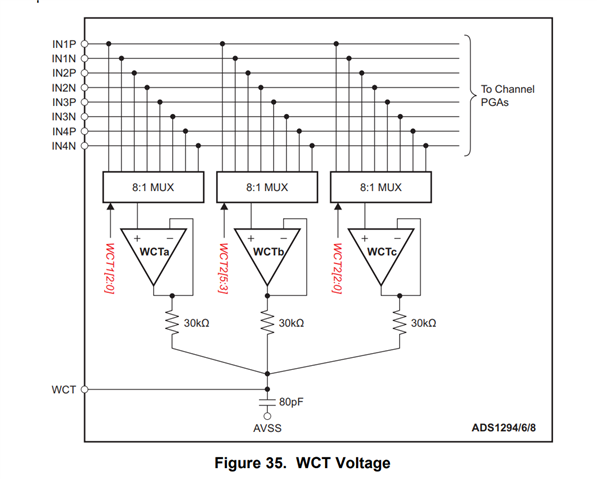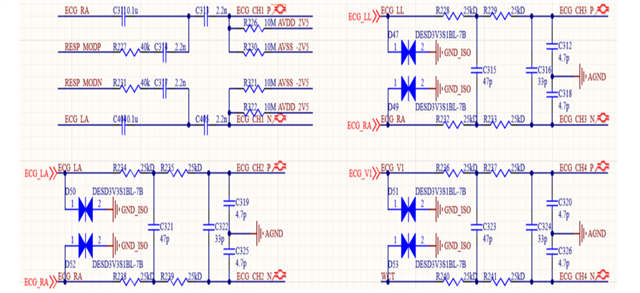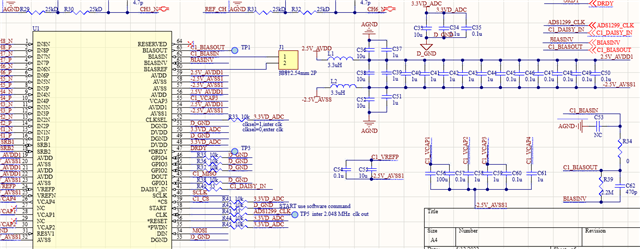Other Parts Discussed in Thread: ADS1299
Hello,
One customer wants to know the accuracy of the 30Kohm resistor and 80pf capacitor of Figure 35. And also he also need to know the output impedance of the three WCTa,WCTb and WCTc.
Because when he tested the BIAS function, he tested the resistor is 240ohm while the datasheet of Figure 43 is 220Kohm . So he'd like to know the internal resistor accuracy .
Considering the specificity of the WCT, he need to improve the CMRR, and the external circuit he used the high accuracy 0.1%of component to keep the consistency.


Best regards
Kailyn






